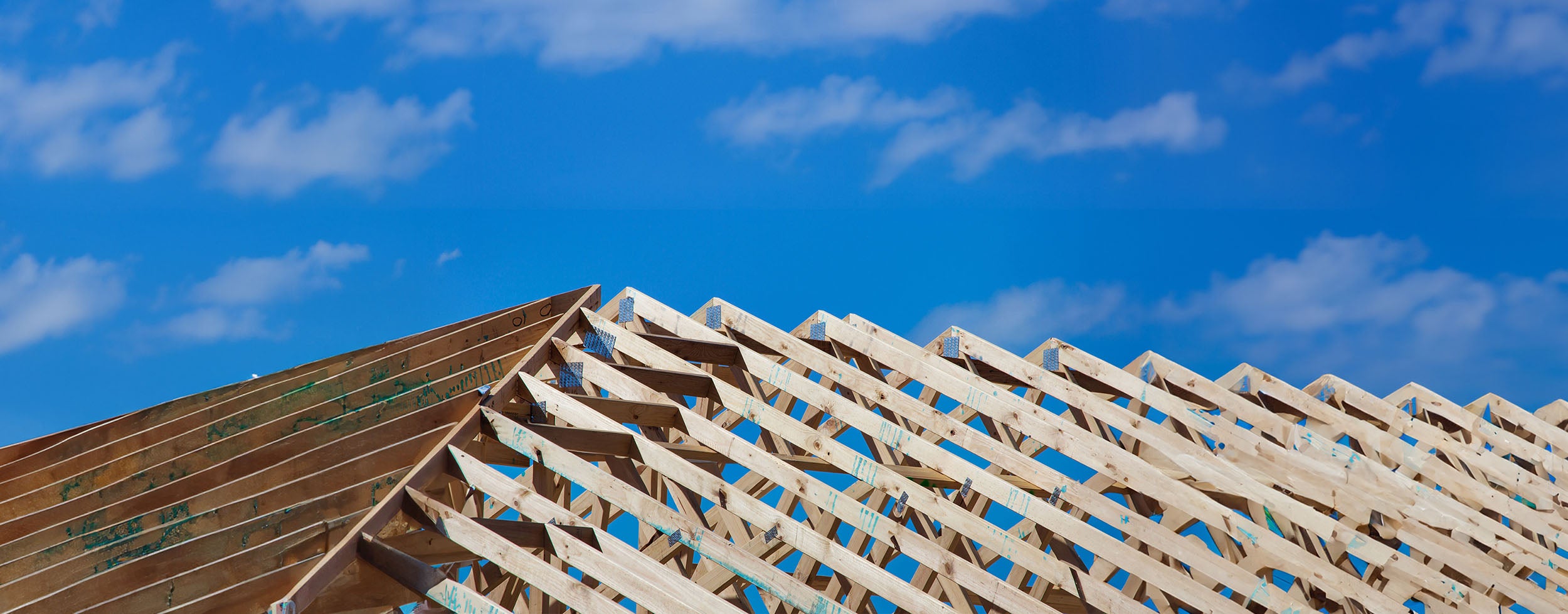
Roof Trusses
-
Roof Trusses
-
Attic Trusses
Find out more -
Posi-Joists
Find out more
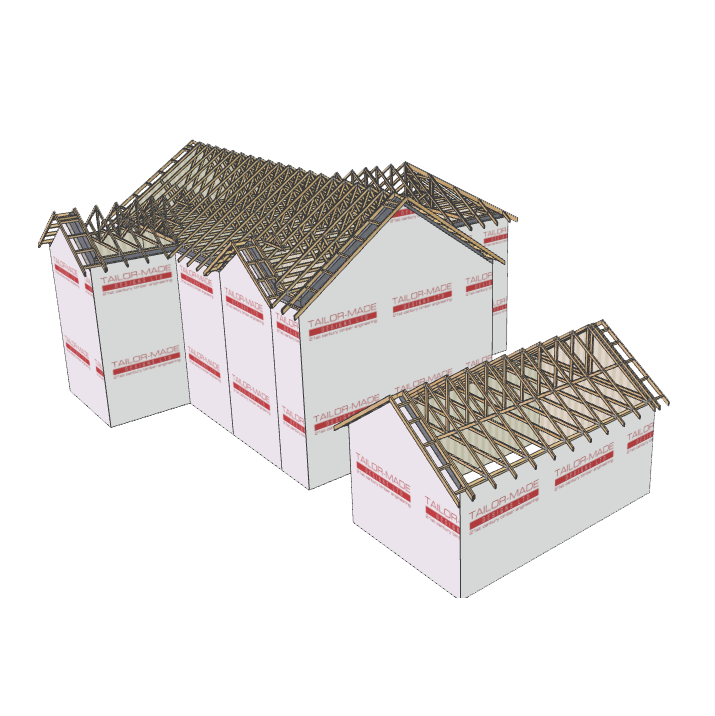
Typical Construction Methods
Roof Trusses are available in a huge variety of configurations to suit your project. These can include attic trusses to provide additional living space, raised tie trusses, scissor trusses and more. Here we have drawn up a fairly standard house type with projections to the front and rear and a detached garage to demonstrate some of the common roof truss construction methods and explain some of the terminology.
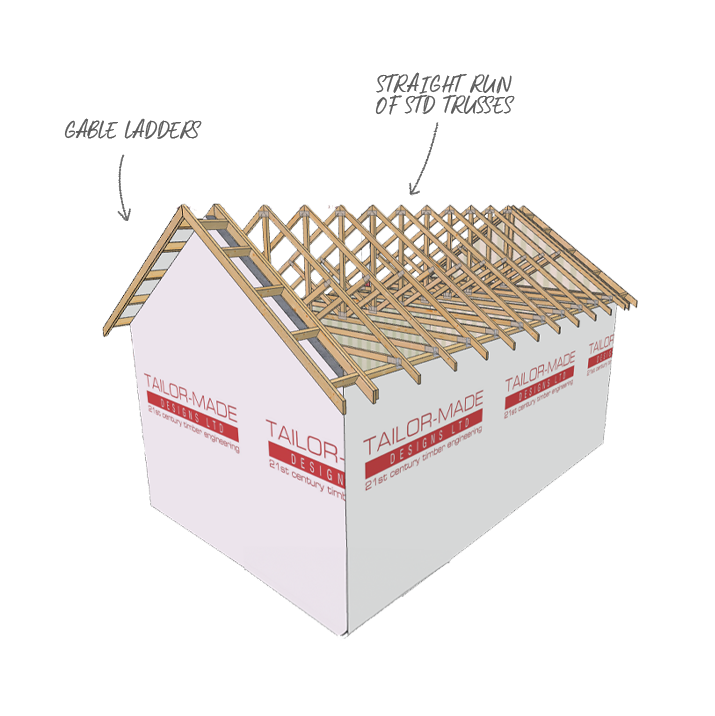
Straight Run of Standard Trusses
We've taken the garage from the image above as an example of what we would refer to as a straight run of standard trusses with gable ends. The gable ladders are required if the roof has an overhang with barge boards. The roof trusses would normally be spaced at 600mm centres. These are very easy to order – all we require is the span over the wallplates, pitch of the roof and the length of the building or number of trusses you require. This type of roof can be easily ordered online here.
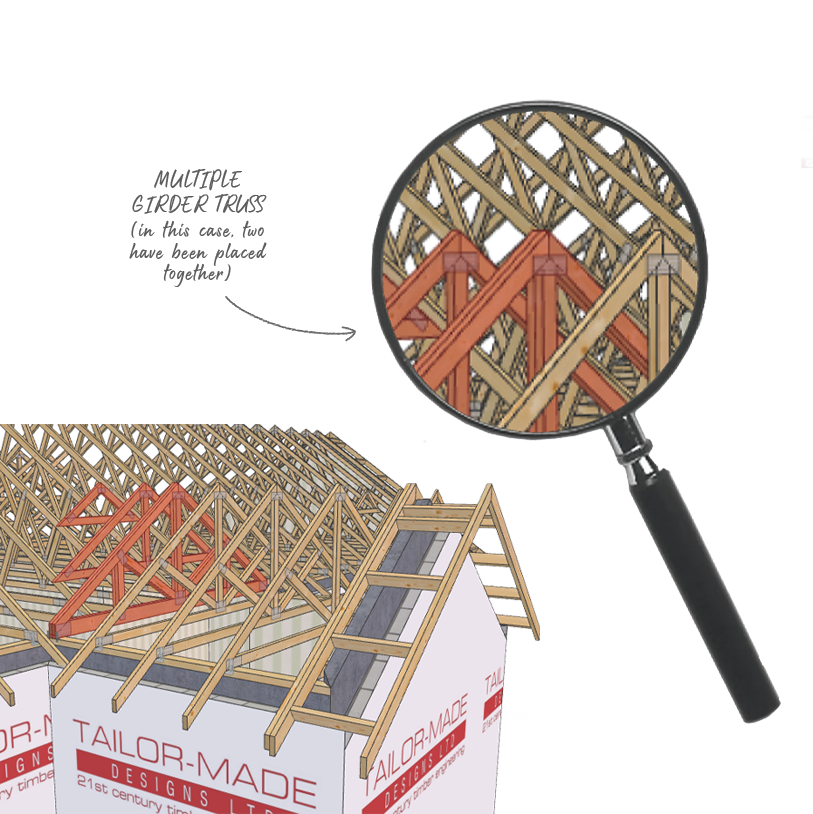
Front Projection
The front projection of the house features a multiple girder truss, usually 2 or 3 ply, which supports the main run of trusses behind using hangers. The valley behind (highlighted in red) is constructed on top of the main roof using valley trusses, also known as diminishing trusses.
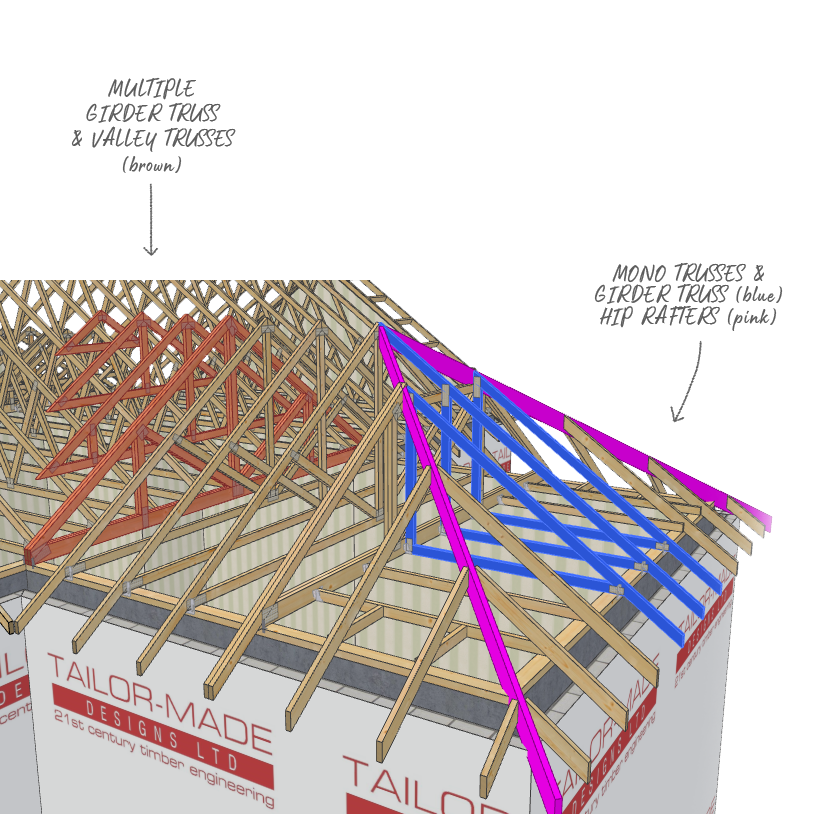
Rear Projection with Hip End
The rear projection of the house makes use of the same girder truss and valley trusses as the front projection, but also features a hip end. The hip end features what is known as hip girder truss to support the hip end. This in turn supports the hip rafters and a series of mono-trusses.
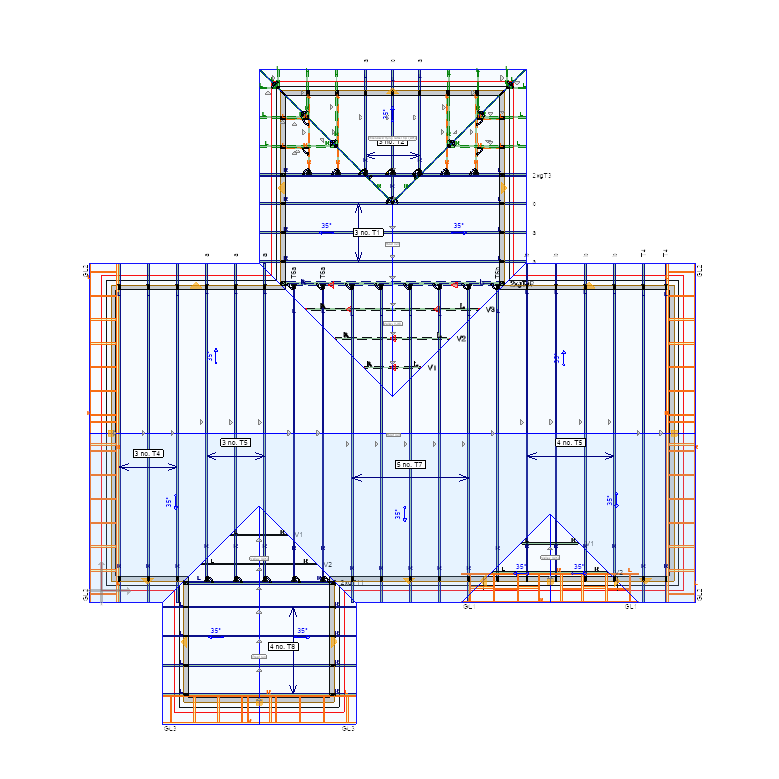
Truss Layout
When we design your roof, we will take care of all of these details and provide you with fully detailed easy to understand drawings to work from, as well as a fully interactive 3D model. Our designs are supplied free of charge with all quotations provided.
For more information including guides, brochures and technical info, view our downloads page here.
Interactive 3D Model
If you tap or click on the image below, you'll be able to take yourself on a tour of the house featured above.
